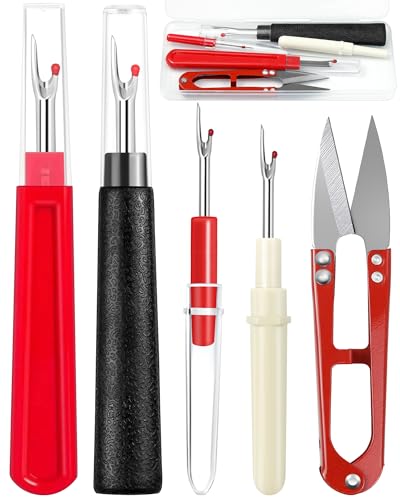Sewing can be such a rewarding craft, and mastering different stitches opens up a world of creative possibilities. One technique I absolutely love is the French knot. It might sound fancy, but once you get the hang of it, it’s a simple way to add beautiful texture to your projects.
When I first started, French knots seemed a bit tricky, but with a little practice, they became a staple in my sewing toolkit. Whether you’re decorating a quilt, embellishing a garment, or creating your own unique designs, this beginner’s guide will walk you through each step. Together, we’ll make sure you feel confident and excited to incorporate French knots into your next creation.
Understanding French Knots
French knots add a textured detail to sewing and embroidery projects. They create small, raised dots that enhance the design.
What Are French Knots?
French knots are a fundamental embroidery stitch used to create small, tight knots on fabric. They result in a raised, three-dimensional dot, adding texture and depth. Each knot involves wrapping the thread around the needle multiple times before pulling it through the fabric.
Uses in Sewing and Embroidery
- Decorative Accents: Adding dots to patterns on garments, quilts, or home textiles.
- Embellishments: Enhancing designs with texture and visual interest.
- Creating Depth: Building up areas within a design for a three-dimensional effect.
- Appliqué Work: Securing appliqués while adding decorative details.
Materials You Need
To sew French knots, gather the essential materials for precision and ease. Having the right tools ensures a smooth experience.
Types of Threads
Select embroidery threads with a smooth texture and sufficient sheen. Cotton floss offers durability and comes in multiple colors. Silk threads provide a lustrous finish, ideal for intricate designs. Metallic threads add shimmer but require careful handling due to their texture.
Needles Suitable for French Knots
Use needles with a sharp point for easy fabric penetration. Embroidery needles typically feature larger eyes to accommodate multiple thread strands. Sharps offer versatility for various fabric types. Ensure needle size matches thread thickness to prevent tangling.
Step-by-Step Guide to Sewing French Knots
I’ll walk you through each step to create perfect French knots. These instructions make adding texture to your projects simple and effective.
Preparing Your Fabric
- Iron the Fabric: Start by ironing your fabric to remove any wrinkles, ensuring a smooth surface.
- Mark the Spot: Use a fabric pencil or chalk to mark where you want each knot.
- Thread the Needle: Cut a 12-inch thread length, pass it through a sharp embroidery needle, and tie a secure knot at the end.
Creating the Knot
- Pierce the Fabric: Insert the needle from the back to the front at your marked point.
- Hold the Thread: Keep the thread taut between your thumb and middle finger.
- Wrap the Thread: Rotate the thread around the needle 2-3 times to form the knot.
- Reinsert the Needle: Push the needle back down near the starting point while maintaining tension.
Securing the Knot
- Pull the Thread Tight: Gently tug the needle to snug the wrapped thread into a firm knot.
- Check the Knot: Ensure the knot sits flat and is securely anchored in the fabric.
- Trim Excess Thread: Cut any leftover thread close to the fabric to prevent loose ends.
Common Mistakes to Avoid
- Using Incorrect Thread or Needle: Choosing a thread too thick or a needle too small complicates knotting. Ensure thread matches your fabric and needle type.
- Not Holding Thread Taut: Allowing the thread to slack results in loose, uneven knots. Keep the thread firmly taut while wrapping.
- Uneven Wrapping: Wrapping the thread inconsistently creates irregular knots. Aim for uniform wraps around the needle.
- Improper Knot Securing: Failing to tighten the knot properly causes slipping or unraveling. Pull the thread snugly to secure each knot.
- Inconsistent Knot Size: Varying knot sizes disrupts the design’s uniformity. Maintain the same tension and wrapping technique for uniform knots.
- Skipping Fabric Marks: Neglecting to mark knot spots leads to misplaced knots. Use fabric markers or chalk to outline precise locations.
- Pulling Thread Too Tight or Too Loose: Excessive tension distorts the fabric, while too little causes knots to float. Adjust tension according to your fabric’s thickness.
Tips for Perfect French Knots
Achieving flawless French knots involves attention to detail and consistent technique. Here are essential tips to enhance your French knot skills:
- Select Appropriate Thread
- Choose cotton floss for durability, silk for shine, or metallic threads for shimmer. Ensure thread thickness matches your needle size to prevent tangling.
- Use the Right Needle
- Opt for sharp-pointed embroidery needles with larger eyes. This accommodates multiple thread strands and facilitates smoother knot formation.
- Maintain Thread Tension
- Keep the thread taut while wrapping around the needle. Consistent tension ensures uniform knot size and prevents loose loops.
- Control the Number of Wraps
- Limit wraps to two or three around the needle. Excessive wrapping can make knots bulky and uneven.
- Insert Needle Perpendicularly
- Pierce the fabric at a right angle. This approach positions knots evenly and maintains the design’s consistency.
- Mark Knot Positions
- Use fabric chalk or washable markers to indicate knot placements. Marking guides help in placing knots accurately and uniformly.
- Use an Embroidery Hoop
- Secure the fabric in an embroidery hoop to keep it taut. A steady fabric surface simplifies knot creation and alignment.
- Trim Excess Thread Carefully
- Cut threads close to the knot without pulling. Neatly trimmed threads prevent snagging and contribute to a polished finish.
- Practice Consistently
- Regular practice hones your technique. Consistent repetition leads to proficient and aesthetically pleasing French knots.
Implementing these tips will enhance the quality and appearance of your French knots, making them a standout feature in your embroidery projects.
Conclusion
Sewing French knots became one of my favorite embroidery techniques. Seeing your designs come to life with those little raised dots is so satisfying. Keep practicing and don’t get discouraged by initial challenges. Soon enough you’ll be adding beautiful textures to all your projects. Happy sewing!

















